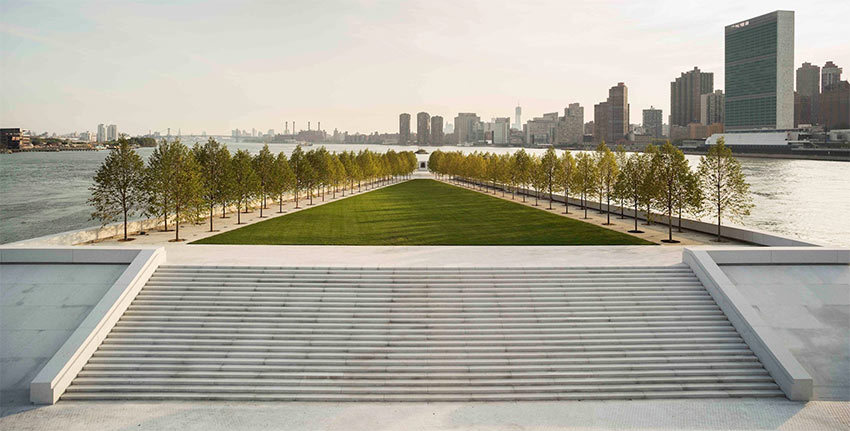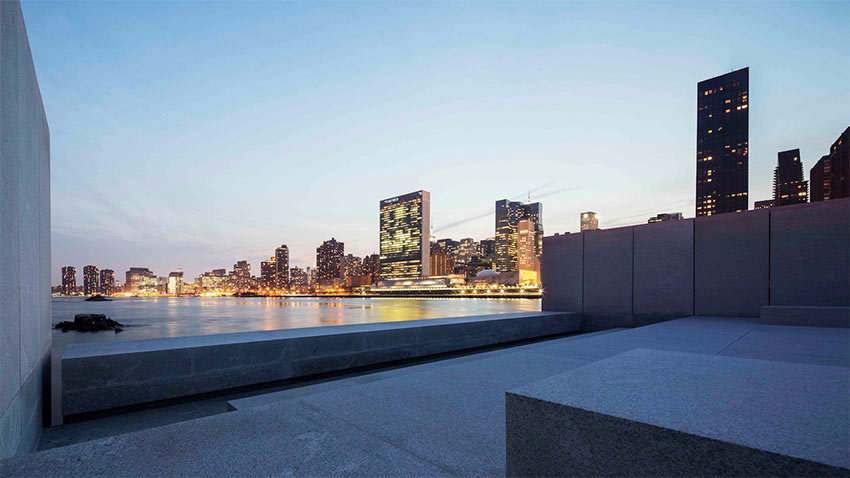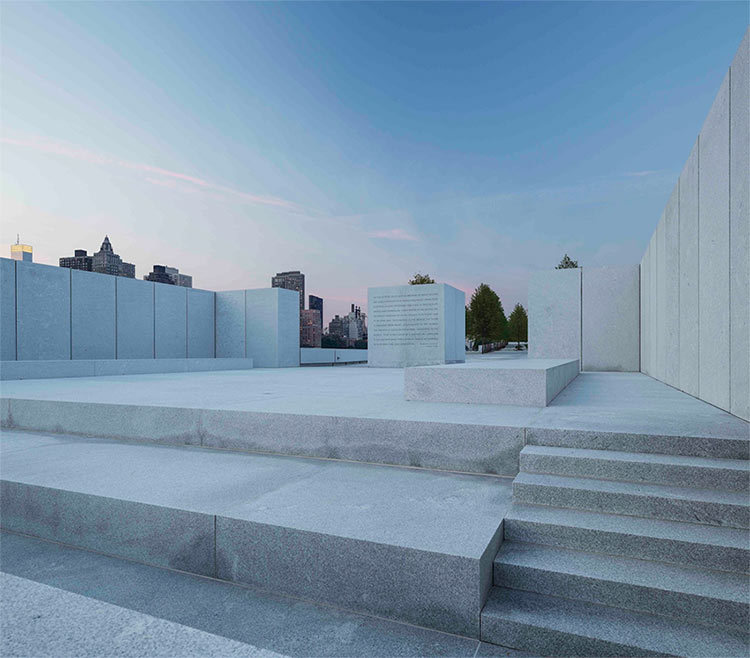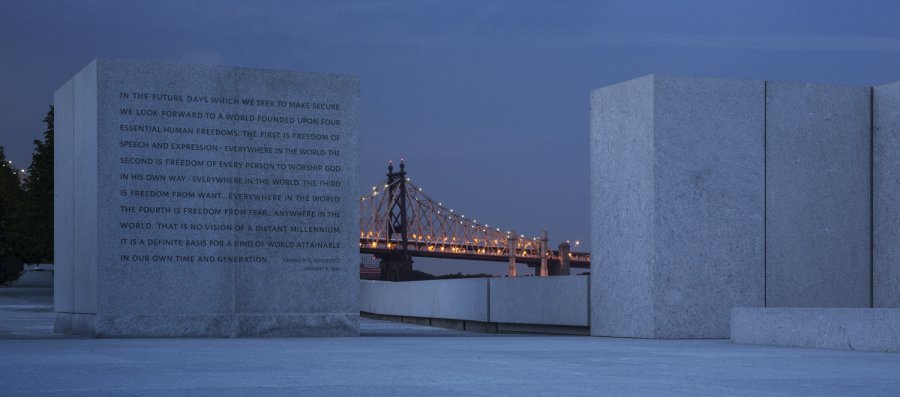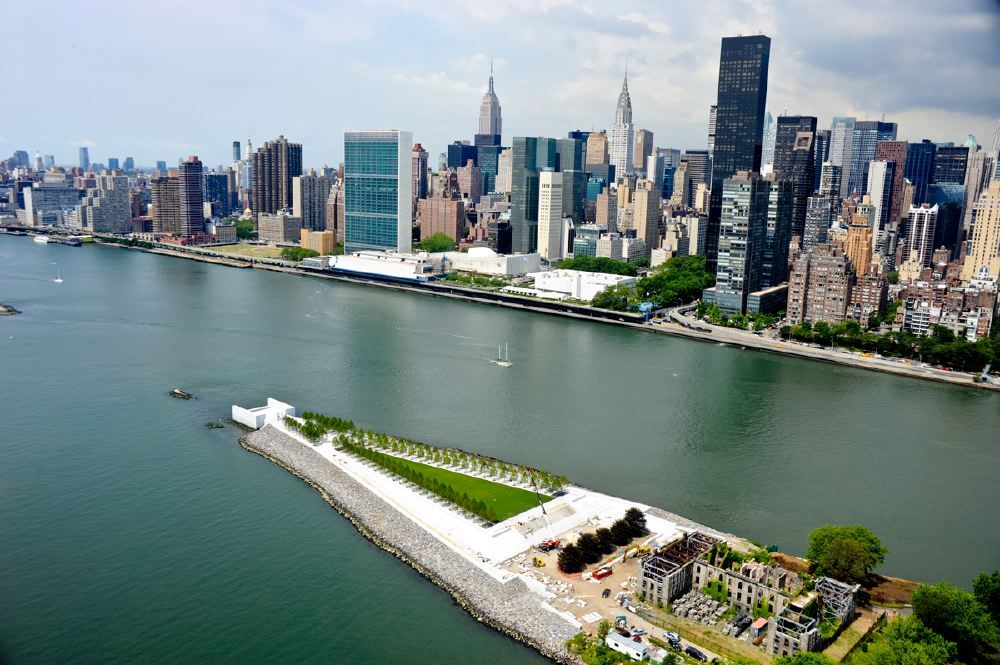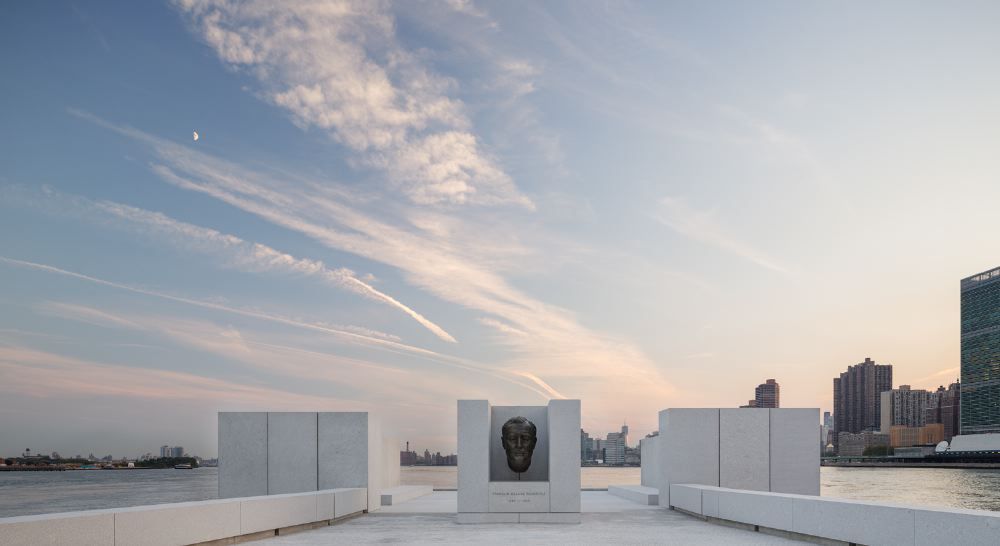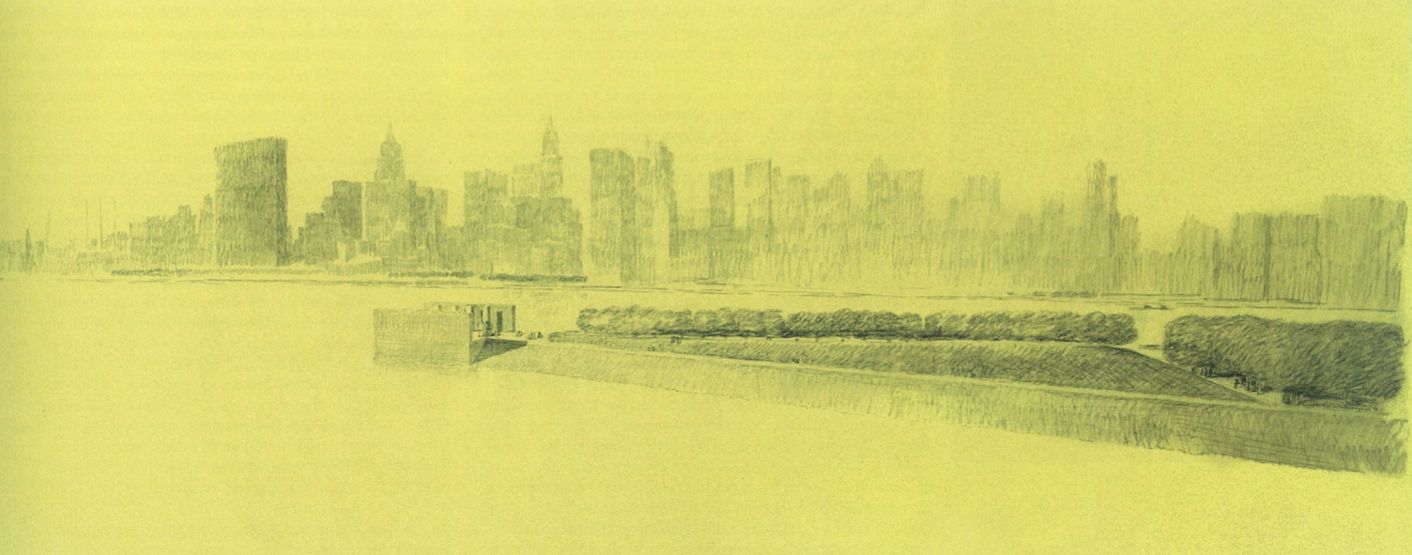The completion of a presidential memorial in the USA - in any year, at any location - is cause for reflection upon current events. But the dedication of Louis Kahn’s Franklin Delano Roosevelt Four Freedoms Park in New York City, just two weeks before a presidential election that pits Big Government against States’ Rights, seems downright prescient.
As an American, it’s hard not to see a reflection of our own time in Roosevelt’s. He established social welfare as an American tradition and fought for the reform of Wall Street. He created millions of jobs and saw us through the Great Depression. Kahn’s memorial, rising from the East River between Manhattan and Queens, has a deep resonance to it, both for those who lived in FDR’s time, and those who didn’t.
Louis Kahn was 71 when he designed the memorial, just three years before he died after going into cardiac arrest in a Grand Central Station bathroom. Kahn’s career was gaining momentum, as he codified past experimentations with bold geometry and materiality into an established voice. His Yale Center for British Art had received rave reviews just two years before, after successes with Kimbell Art Museum in 1966 and Exeter Academy in 1965. The commission for Four Freedoms was a chance for Kahn to reflect on his beginnings as an architect, when commissions to build social housing and community planning projects had sustained him as a struggling young designer. Those projects were the direct result of FDR’s New Deal programs, and Kahn had great admiration for Roosevelt.
This admiration echoes through the memorial, which slices elegantly into the East River like a stone ship. Hundreds of the 36-ton granite blocks form the park’s structural backbone, each separated by a thin mortar-less joint that aligns perfectly with the gaps in the paving stones underfoot. The triangular park rises from two symmetrical berms edging the East River. A quick walk up the ramp deposits visitors on a neat grass bank, trimmed with Linden saplings - it’s worth noting that Hitler famously tore out hundreds of the same species in Berlin to make way for his military parades. A dignified bronze bust of Roosevelt, sculpted in 1933, presides over the scene. When I was there, kids in Halloween costumes and wheelchair-confined World War II vets dotted the lawn, taking pictures.
Roosevelt’s visage gives way on either side to a remarkable space that has been dubbed “the room” by consensus. It’s a sunken rectangular space at the tip of the park, enclosed on three sides by 12-foot granite walls. The fourth wall - facing south into the East River - is edged by a low trough of stone that fills with rainwater and fallen leaves from the nearby trees. Visitors can sit on a low stoop and take in the view, which features the nearby UN Building prominently - an institution the Roosevelts (both Franklin and Eleanor) did much to shape. It’s a slow, meditative space, completely foreign to New Yorkers, who must eke out contemplative moments where they can, considering the limited space and fast pace of the city. This park offers those “slow” moments in droves, asking visitors to sit and reflect on what FDR might have said about America today.
And so we reflected. On the eve of a critical moment in American politics, it’s remarkably easy to animate Kahn’s architecture with symbolism plucked from our own time - chalk it up to narcissism. Only a few days after we visited, the week-old park was battered by Hurricane Sandy, which spewed water over the embankments. Thanks to emergency response teams funded largely by FDR-era initiatives, New York is recovering, and the water is receding from Four Freedoms. It, like Roosevelt’s vision of democracy, was built to weather storms.
- Kelsey Campbell Dollaghan, New York
...And if you still Kahn't get enough: there's a Louis Kahn exhibition currently up at the Netherlands Architecture Institute (previously featured in uncube news). Check out this new video about the exhibition concept and design:




